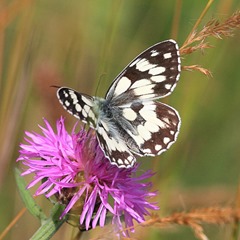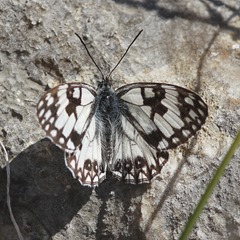I detest the winter. Despite the best efforts of the BBC’s Winterwatch programme trying to convince me that it’s interesting and enjoyable, I hate it. There are so many things about it that I dislike starting, of course, with the British winter weather. The pastimes that I enjoy all really require something approaching summer weather. Sure, you can go for walks or dress up and ride a bicycle in the winter but it’s always making the best of a bad job – it might be bearable but it’s not actually enjoyable, as such. With insects being my main wildlife interest, and dragonflies in particular, winter sucks because they’ve all gone. The good ol’ birds give me a little respite, hoping that our garden will be invaded by winter migrants such as Redwings (Turdus iliacus), Bramblings (Fringilla montifringilla) and, if we’re really lucky, Waxwings (Bombycilla garrulus) but again, it feels like making the best of a bad job. Like the birds, I should grow wings and migrate south for winter.
Since my suddenly sprouting wings and being able to fly south is almost as unlikely as a novel by James Patterson being well-written [I hope you can see the connection], winter is a time to go through the year’s set of photographs and maybe to update the relevant sections of our website. Having seen dragonflies in Spain for the first time this year, I was doing just that to our Odonata section. In reviewing our Spanish wildlife shots, I came across a Marbled White butterfly which I’d somewhat casually snapped. Rather too casually, as it turns out. When it comes to photographing Odonata, I’m quite fond of saying that, “you really need to know what you are looking at before knowing how to photograph it”. By which I mean that, you need to know what distinguishing features to concentrate on in order to make a reliable identification.
In like manner, I was guilty of dismissing my butterfly as, “just a Marbled White”, so I didn’t give it the concentration it deserved – I just snapped it for the record. Performing my winter pastime, I noticed that I hadn’t filed my butterfly away, just to log that I’d seen one in Spain, and noticed it looked a little different. Lo and behold, completely unknown to me, there is a Iberian Western Marble White and that’s what I had. Had I known, I’d have stuck around a lot longer waiting for a better wing position.
Here’re the two characters side by side, the regular Marbled White (Melanargia galathea) on the left and the Iberian Western Marbled White (Melanargia lachesis occitanica) on the right. The pose is similar; the Iberian Western suspect lacks the dark patches towards the root of the hind-wing. There’s also three quite strong ocelli towards the rear edge of the hind-wing.
Well, such things make some of us happy. 😀



Whoops, correction!
This gets quite confusing. Not only is there an Iberian Marbled White (Melanargia lachesis) but also a Spanish Marbled White (Melanargia ines) and a Western Marble White (Melanargia occitanica), all of which occur in Spain, along with Esper’s Marbled White (Melanargia russiae) which I think I can discount. I really should have looked much more comprehensively first time around.
After a little agonizing, I now believe my newcomer is not an Iberian Marbled White but a Western Marbled White. The most diagnostic feature seems to be the underside – I told you one needed to know the answer before knowing what to photograph – but the strong ocelli near the trailing edge of the hind-wing and the overall shape of the white patches on the fore-wings look good enough to me.
I’ll edit the text in the post accordingly.
Mind you, I’ve been wrong before! 😉